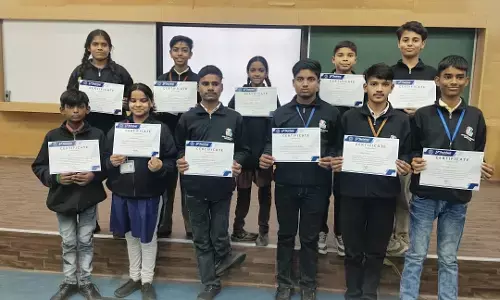How to develop a winning human capital strategy

Digital disruption, changing workforce demographics, and an increasingly competitive business environment have compelled organizations to take a long hard look at their talent practises.
Digital disruption, changing workforce demographics, and an increasingly competitive business environment have compelled organisations to take a long hard look at their talent practises. Today, more than ever, the effectiveness of organisations depends on their abilities to address key talent challenges such as capability development, change management, and business alignment. Organisations need a solid human capital strategy to be able to achieve their business goals and sustain growth.
What is human capital strategy?
A human capital strategy is a blueprint for aligning HR processes to people and technology within organisations to achieve business goals. A sound human capital strategy is rooted in workforce planning and is supported by human capital management systems. It's a combination of technology and processes aligned to broader organizational objectives.
So, how can organisations begin creating a human capital strategy? Here'sa glimpse into building a winning human capital strategy for the digital age.
Build a winning human capital strategy in 2019
Step #1: Identify and define the value of human capital
The first step towards building an effective human capital strategy is to identify how business value is created and defining that value. This requires a deep understanding ofan organisation's core business focus as well as its larger business strategy. HR leaders must understand current market trends and how they're affecting their HR and business strategy. For instance, organisations in the automobile industry must understand how a slump in demand will affect their headcount and sales figures for the next two quarters.
HR teams can start by building a roadmap for leveraging existing human capital investments to drive competitive business advantage. They must:
1. Translate business strategy into an effective and actionable HR strategy with clear priorities and a business plan
2. Break-down the HR strategy into individual HR initiatives and programs
3. Outline the best ways to attract, upskill, and retain new and existing talent
Additionally, organisations will also need to flesh out their policies on hiring and retaining talent while considering: what skills and competencies they might need in the future, their talent sourcing strategy, and creating a culture of high-performance.
Step #2: align processes to strategy
Once the strategic direction has been established, the organisation must review its policies to determine if they are aligned to the defined HR strategy. Then, HR departments must segment the workforce on the basis of value creation and assess each segment's needs to create tailored programs and services.
Next, HR must undertake a cost-to-benefit analysis to understand activities and processes that are generating maximum ROI and increase investments in optimizing those process. This also gives HR visibility into processes and initiatives that need to be scaled back or eliminated. These initiatives could include learning and development initiatives, change management, HR service delivery, performance management or any other HR process intended to increase productivity and performance.
Finally, create and implement HR solutions that will help execute the HR strategy at every step of the talent lifecycle.
Step #3: create and deliver value
Translating HR strategies and initiatives into real business value requires the right HR service delivery model, capabilities, and technology.
1. Choosing the right delivery model: HR service delivery is key to overcoming people challenges in the business. Analyse the current service delivery model and assess its ability to effectively meet the organisation's needs and objectives. Organisations must then define specific roles, governance mechanisms, and delivery channels. It has become critical for organisations to reimagine the way HR supports them. Which means HR must assess its future and current capabilities to support key business outcomes through a service delivery model.
2. Building the right capabilities: Organisations must identify and develop advanced skills, competencies, and capabilities required for HR to achieve its strategic goals. Capabilities of the HR function and its people is vital to executing the business strategy.
3. Implementing the right technology: HR has come a long way over the past decade. Today HR is as much about people as it is about using the right technological solutions to achieve strategic business outcomes. Identifying the best-fit technology for an organisation and implementing company-wide transformation will become a defining competitive advantage for organisations going forward. Digital technologies also make it easier for organisations to assess the impact of key HR services, initiatives, and strategies.
Bringing it together: process, people, and technology
It is an interesting time for HR as the world of business undergoes significant transformation. In order to support the business, HR needs to transition from being just a transaction function to a strategic business function. And a human capital strategy can help HR create a roadmap to align its processes, people, and technologies with the organisation's business strategy. It's the only viable way forward for HR in today's competitive business landscape.
















